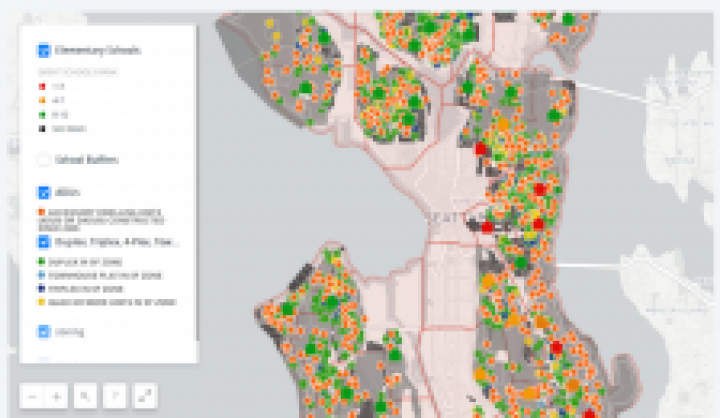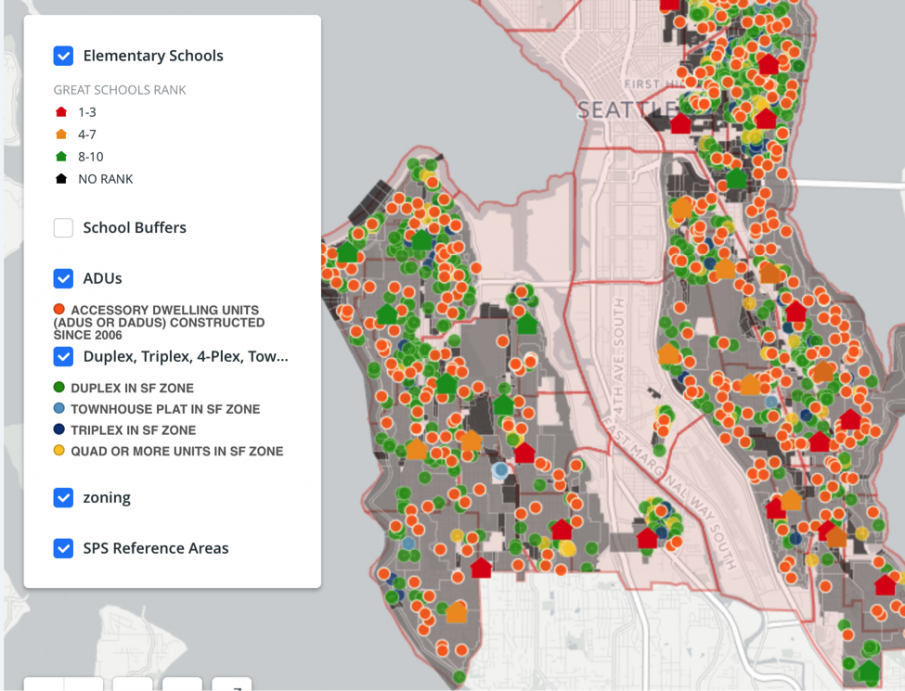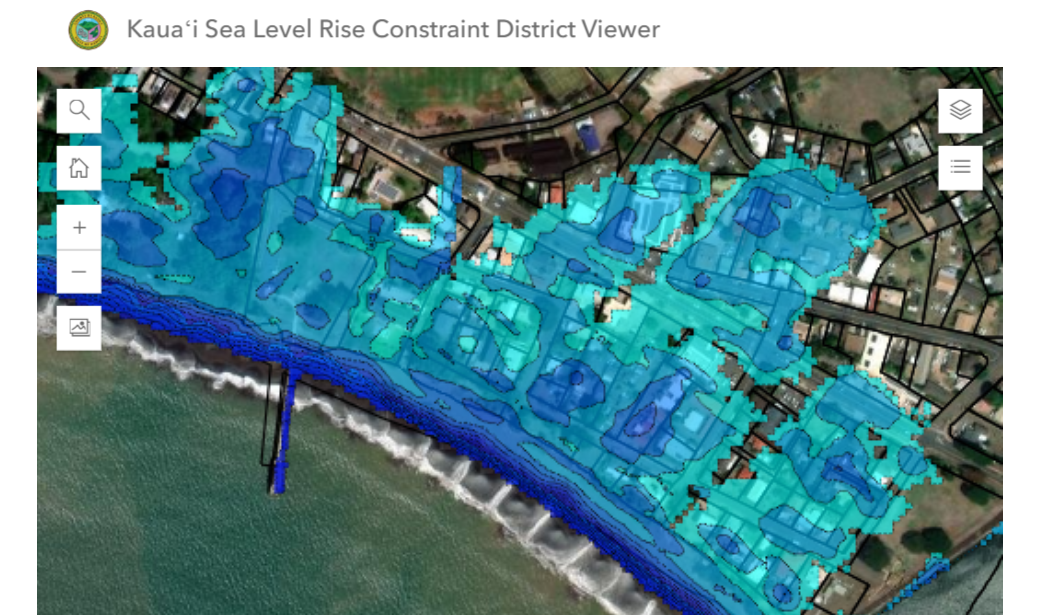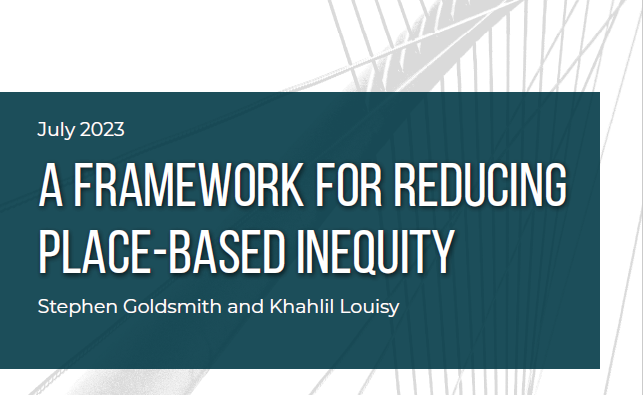- October 23, 2017
- Data Visualization
Complementing Harvard’s Map of the Month series, each week, Map Monday highlights a data visualization that enhances understanding of or helps resolve a critical civic issue.
The view over Seattle’s Ship Canal is breathtaking – a panorama of the Olympic and Cascade Mountains connected by misty skies. That bottleneck between the two mountain ranges, however, is in fact the marker of a stark socioeconomic divide between the city’s north and south regions. Over the last few years, as the city has experienced the boom (and accompanying growing pains) of rapid gentrification, that divide has widened, with longtime residents even in Seattle’s southernmost neighborhoods being displaced to Federal Way or Tacoma.
One byproduct of the city’s widening income is a significant achievement gap in public schools, as evidenced in an interactive map by The Sightline Institute, a nonprofit that conducts research on sustainability in the Northwest, with an emphasis on intersections of environmental activism and social justice. In the visualization, titled Multi-Family Housing in Single Family Zones: Schools, Sightline compared educational achievent data from the GreatSchools index with housing data from the King County Assessor, City of Seattle building permits, and City of Seattle zoning maps. The map reveals the expected trend: that the city’s most highly ranked elementary schools (measured by the percentage of students testing at or above grade level in math and English) are concentrated in the north, home to Seattle’s most expensive neighborhoods.
It’s no surprise that higher levels of affluence are correlated with more highly performing schools, given the complex factors of language access, poverty, and availability of school services. School segregation is compounded by another factor, however, one that makes the presence of lower-income students in the best public schools a near-impossibility. The map tells the story, revealing a relationship between school ranking and a neighborhood’s availability of single vs. multi-family units according to the city’s highly restrictive zoning pattern. On average, single-family zoning (one unit owned by one family) covers 72% of land in attendance areas of Seattle’s 13 top-rated public elementary schools.
This view of North Seattle (below), for instance, shows a high concentration of schools that have received highest ranking (indicated in green). The blue, green, and orange dots indicate duplexes, triplexes, etc. The further north you look, the scarcer those options become, as zoning regulations prohibit nearly any housing that isn’t a single-family, detached structure.
South Seattle, by contrast, is replete with accessory dwelling units (ADUs), such as apartments over garages or basement apartments. It also the home to the majority of schools with lower ranking (orange and red).
In other words, if you are the parent in Seattle who wants the best in public education for your child, your options are shelling out on average $850,000 for a single-family home, entering a public enrollment lottery, or scouring neighborhoods in north Seattle for the rare (and likely very expensive) rental unit.
Plenty of urban maps illustrate the alarming connection between gentrification and gaps in educational achievement. Sightline’s unique visualization highlights that this disparity isn’t just the result of market trends, it’s directly tied to prohibitive housing policy. Identifying the role of this structural inequality in perpetuating Seattle’s north-south divide is necessary in advocating for policy shifts, such as allowing more small duplexes or triplexes in single-family zones. The city is currently considering these among other options to reduce the glaring segregation in class – and the classroom.





 Jess Weaver is a Research Assistant and Writer for Data-Smart City Solutions. Before joining the Ash Center, Jess worked as a researcher on a field mapping project on civic media for the MacArthur Foundation while completing her Master’s degree in Civic Media, Art and Practice out of the Emerson College Engagement Lab. She spent the bulk of her career in nonprofit strategic communications and corporate social responsibility, most recently as the Communications Director for Essential Partners, a Boston-based nonprofit that equips individuals and communities to engage in constructive dialogue across differences in identity.
Jess Weaver is a Research Assistant and Writer for Data-Smart City Solutions. Before joining the Ash Center, Jess worked as a researcher on a field mapping project on civic media for the MacArthur Foundation while completing her Master’s degree in Civic Media, Art and Practice out of the Emerson College Engagement Lab. She spent the bulk of her career in nonprofit strategic communications and corporate social responsibility, most recently as the Communications Director for Essential Partners, a Boston-based nonprofit that equips individuals and communities to engage in constructive dialogue across differences in identity.


